All about Stephanandra notched
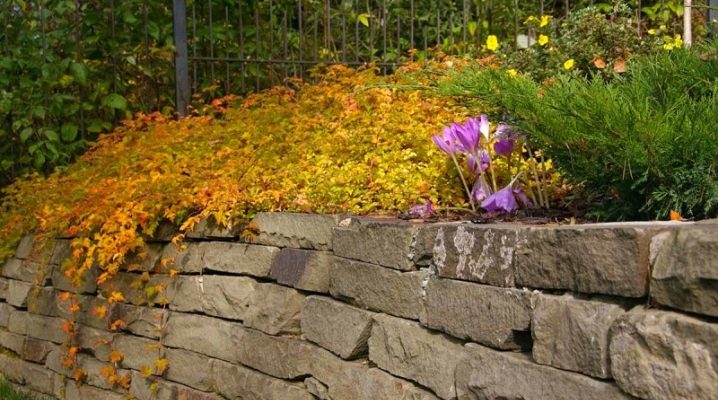
The graceful deciduous plant, called Stephanandra, came to landscape and park design from the warm climates of the subtropics. In the wild, a shrub with beautiful carved foliage and red shoots grows in Korea and Japan. One of the 4 known plant species survives in the harsh climate of central Russia.
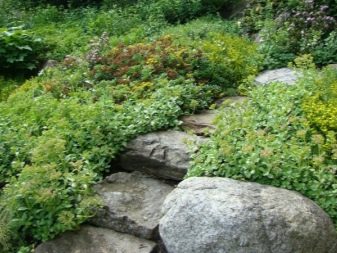

Description of the plant
In addition to the beautiful openwork foliage, Stefanandra incised-leaved is attractive with abundant flowering in the summer. In autumn, the shrub stands out against the background of other ornamental plants with an unusual orange color of leaves, and in winter it is distinguished by red shoots emerging from white snowdrifts. By the structure of delicate flowers, Crispa is similar to its close relatives in the Rosaceae family, such as rowan, plum, pear, cherry, hawthorn and others. However, the plant does not produce edible fruits and is cultivated, like roses and spirea, exclusively for decorative purposes.
For the harsh weather conditions of the northern regions of the Russian Federation, one of the plant species is suitable, which is called stephanandra incisa. It is a lush, undersized shrub that is no more than 1.5 meters high. The width of the ornamental bush is noticeably greater than the height and reaches 2.5 meters. Thin reddish-brown shoots bend arcuately and are covered with alternately arranged leaves, which begin at the base with wide, serrated lobes, sharply tapering towards the ends. The bottom of the leaves looks pubescent, and the undersized variety of Crispa has wrinkled foliage of light green color, which turns bright orange in the fall.
The yellowish-green flowers of the ground cover shrub are collected in clusters and spread a pleasant smell. The flowering period of Stephanandra falls in June-July and lasts for 3 weeks. Recently, the shrub - both medium-sized and creeping dwarf forms - has been widely used in many countries to decorate landscape compositions. The unusual beautiful shape of carved leaves, abundant flowering and splendor of the crown attract garden owners and park designers.
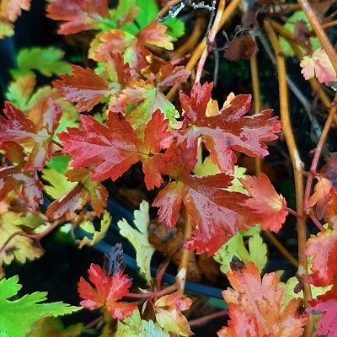
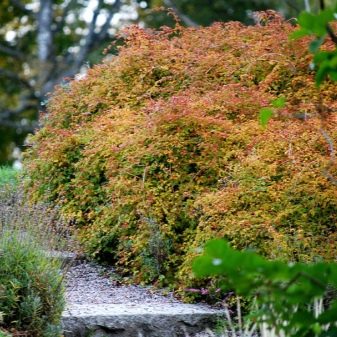
Planting and leaving
Stefanandra is an unpretentious and convenient plant for cultivation in garden and park plantings due to its easy maintenance and a small annual growth of shoots. Having gained its height and width in favorable conditions, the shrub retains stable dimensions for a long time. Small flowers do not delight for long with their appearance and aroma, so Stephanandra is valued more for the unusual color of the shoots and delicate foliage. The bushes go well with many ornamental plants, flowers and are often used in alpine slides.
The incised-leaved stefanandra reaches its maximum height of 2.0-2.5 meters at the age of 25-30 years.
Location
To grow a beautiful spreading shrub, you must adhere to the basic rules for choosing a suitable planting site. An unsuccessful choice of a site for planting Stefanandra seedlings can lead to the fact that the plant will look pathetic and not gain an attractive splendor of the crown. In addition to open sunny areas, shady and half-shaded places are suitable for planting shrubs, but it grows more slowly on them. It should be borne in mind that in deep shade, Stefanandra is rarely covered with flowers.
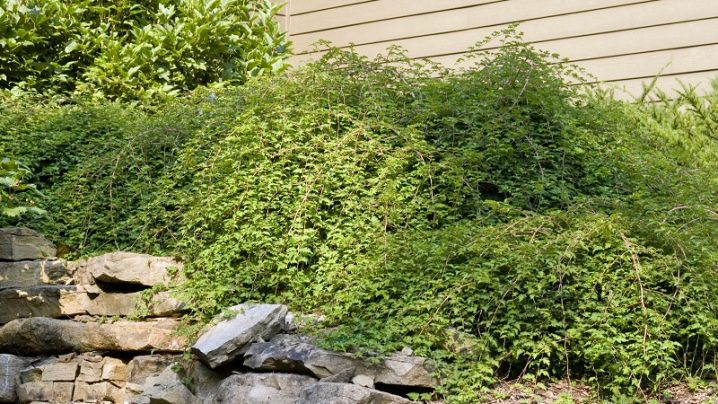
The soil
When choosing a suitable soil quality, it is necessary to check its acidity, since a neutral soil is an ideal option for an ornamental shrub. In terms of composition, light loams or sandy-peat soils are most suitable for it. The plant does not react well to stagnant moisture, therefore, it is useful to lay a drainage layer at the bottom of the planting pit.
To do this, a drainage layer of small pebbles is first poured onto the bottom of a hole 50-60 cm wide and deep, and then a sandy pillow 10 cm thick. The roots of the seedlings are sprinkled with a mixture of compost, peat, sand and humus. After tamping and watering the soil, the near-stem area is covered with humus mulch so that the plant does not dry out during the settling period in a new place.

Watering
Fertile soils provide a good basis for the development of ornamental shrubs, but watering the plant is important, especially during dry periods of the year. Stefanandra notched-leaved, like other plants, reacts to a lack of moisture with drooping or drying foliage. The constant attention of the gardener will immediately notice the lack of moisture that needs to be replenished.
In the summer, watering should be frequent and up to two buckets for one plant, every day or every other day, depending on the readings of the thermometer. During heavy rains, the shrub should not be watered, as excess moisture can negatively affect it. Between the introduction of water, the roots must be allowed to dry out, as they can rot and die.
In spring or autumn, watering can be carried out 2-3 times a week, using settled rainwater and monitoring the condition of the plant.

Top dressing
The Stefanandra plant is very responsive to fertilizing, which can be applied regularly in the spring-summer season, as well as before wintering. In the spring, for abundant leaf growth, it is useful to add nitrogen-containing organic fertilizers such as mullein or diluted bird droppings. In autumn, it is good to cover the tree trunk circle with compost from fallen leaves. In summer, mineral complex fertilizers for universal purposes are periodically applied.
Top dressing and loosening of the soil under the plant contribute to the growth of a beautiful and lush crown of the shrub. The root system must receive not only regular nutrition, but also a sufficient amount of oxygen. In addition, digging up the soil in the near-stem zone helps to get rid of weeds.
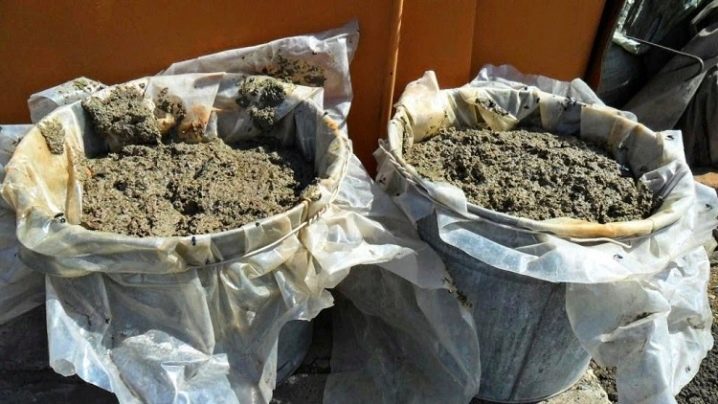
Pruning
Stefanandra does not grow at a very fast pace, but pruning has a noticeable effect on growth activity and giving the shrub a lush, rounded shape. For the procedure, a sharp instrument is used, designed for similar operations in the garden. During the first spring pruning, when the plant is just starting to wake up from winter sleep, you should remove:
- shoots dried up over the winter;
- broken and damaged branches;
- shoots with pronounced signs of disease.
To give a special decorative effect to the undersized Crispe, it is carefully thinned out, shortening the external shoots and removing all unnecessary shoots.
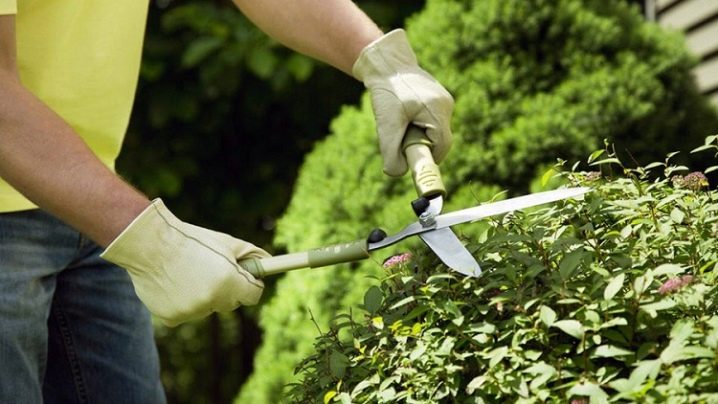
Preparing for winter
The frost-resistant Stefanandra species is recommended for planting in the temperate climate of the middle zone and even in the northern regions. The shrub is distinguished by good winter hardiness, but a long period of low temperatures, which can drop below -25 degrees, can lead to its death. In areas where such weather conditions are normal, a winter shelter is built for a native of the subtropics.
To do this, before the onset of the first autumn cold weather, the branches of the bush are bent to the ground, covered with fallen leaves or spruce branches, and then the structure is sprinkled with a layer of loose soil. Such a winter house will reliably protect Stefanandra from severe frosts. In early spring, the plant is carefully freed from soil and plant waste, straightened and the first pruning is carried out.

Diseases and pests
The ornamental shrub is unpretentious and resistant to diseases and pests. Regular sanitizing pruning and preventive spraying helps to protect Stefanandra cutleaf from common diseases of the species such as powdery mildew, leaf rust and gray rot that occurs during periods of excess moisture. For the treatment of bushes, conventional fungicidal preparations are used, which can be purchased in specialized stores.
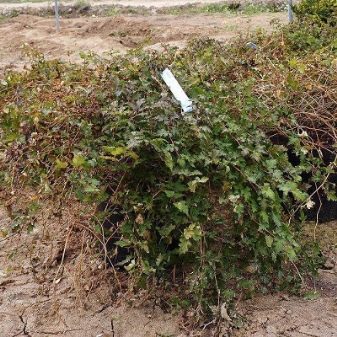
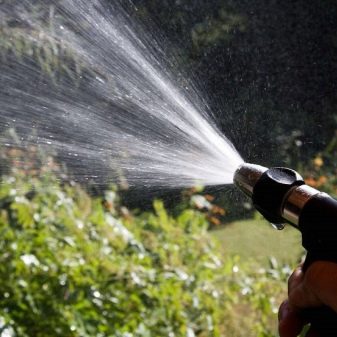
Examples in landscape design
- A beautiful shrub, which came to the landscape design of Europe from Asia, perfectly took root in garden and park compositions. It grows well both on flat areas and on slopes. A dwarf variety called Crispa is especially suitable for masking irregularities in slopes and fences.
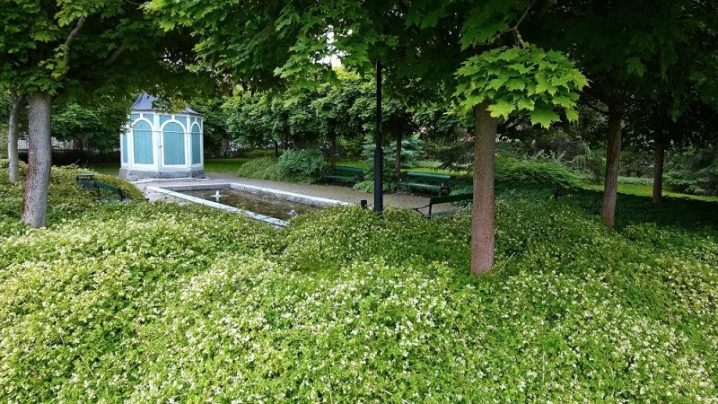
- Stefanandra notched-leaved is used in landscape design for various purposes. With its help, a distant park landscape can be given a tranquil look. A plant can decorate a corner of the garden with its openwork, patterned foliage and give it a special intimate charm. With the help of a prominent type of shrub, turns are well marked on the long paths of a large garden or park.
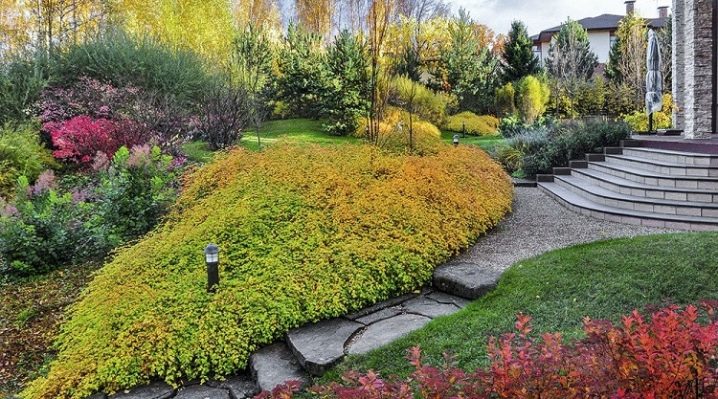
- Skillful combination of decorative stefanandra with conifers will decorate any rockery or alpine slide composition. Its pale green and bright orange foliage in autumn perfectly sets off the dark green background of spruce, juniper or fir. An unusual deciduous plant with conifers creates compositions that are unique in depth and silhouettes, complementing and shading their evergreen crowns on the lower level.
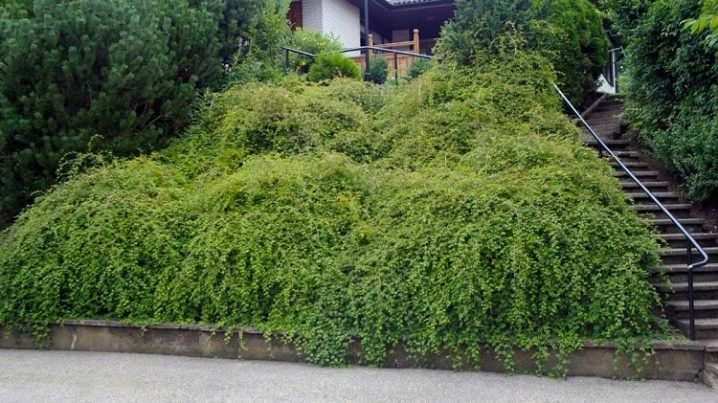
- In confined spaces, Stefanandra can successfully replace large willows or weeping varieties of larch next to a small body of water. Against the background of water, graceful and beautifully inclined shoots of the shrub look spectacular and mysterious.
An ornamental shrub can be surrounded by a flower bed of related plants such as chrysanthemums, primroses, peonies, or anemones.
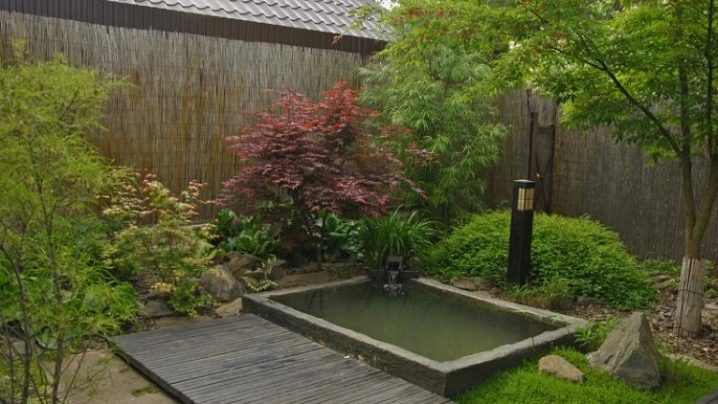



































































The comment was sent successfully.